►Greek Mythology: “Pandora and Helen of Troy, Misogynistic Stereotypes” /
“Collaboration with Carolee Croft”🍎:
![]()

“Pandora” by John William Waterhouse. 1896.
______________________________________________________________
“With the curse, comes a blessing. Zeus wanted to punish humanity by creating you, the first woman, and by giving you that box filled with curses such as illness, war, and poverty. But if you look inside the box, one thing remains. It is hope”… (“After the Evil Spirits are Unleashed”. Carolee Croft).-
⇒♦ Introduction and Sketch of this post:
Greece is widely known as the birthplace of democracy, freedom of speech and thought, and egalitarian life. But in ancient Greece, women had no political or social rights. In Ancient Greece, males hold primary power and predominate in roles of political leadership, political and social privileges and authority. This, in practice came along with prejudices against women, belittling of women, and their exclusion, and Misogyny in many ways.
In ancient Greek mythology, two of the female characters who fit (and fed) this patriarchal model are Pandora and Helen of Troy.
Both, the myths of Helen of Troy and Pandora spring from cultural anxieties about female beauty and female sexuality, centered on the figure of the Parthenos – the girl at marriageable age, a figure who must cross from the world of childhood in her father’s house to the house of her husband. Both women cause tremendous damage, even to people beyond their immediate surroundings.
1. ⇒♦ Women, according to Hesiod, Aristotle and Plato:
2. ⇒♦ Women in Ancient Greece:
3. ⇒♦ Pandora:
As punishment for these rebellious acts, Zeus sent him a woman made of clay named Pandora. Zeus gave her a box (or jar) and forbade her from opening it. Then he sent her down to earth, where her curiosity led her to open the lid. When she did, all other misfortunes fled out.


4. ⇒♦ Helen of Troy:
Helen of Troy, also known as “the Face that Launched a Thousand Ships”, was the stunningly beautiful mortal, daughter of Zeus and Leda. She came out of the same egg as her mortal sister Clytemnestra and she also had two brothers, the twins Castor and Pollux.
Helen’s name, which sounds similar to the word for Greece (Hellas), but also to a verb “to destroy”. This was exploited particularly by Aeschylus, who sees Helen as the “ship-destroyer, man-destroyer, city-destroyer”.
Back to Helen, it seems that Zeus wanted to reduce the human population, so he arranged for the birth of the two characters who would make the Trojan War inevitable: Achilles and Helen, representing “seductive female beauty and destructive male strength”. They have in common an extraordinary self-awareness and concern for their future reputations in myth and legend. Both were half-human, half-divine, Achilles being the son of the mortal Peleus by the sea-goddess Thetis, and Helen the daughter of Zeus in the form of a swan and of the Spartan queen Leda.
Owing to this parentage, she hatched from an egg – the first mark of her unusual, not-quite-human status. Helen is the only female child of Zeus by a mortal woman, an exceptional woman in this as in every other respect. Other versions of the myth suggest that she was the daughter of Nemesis, or “Destruction”.
From a young age, Helen was prone to getting abducted. When she was seven years old, the Athenian hero Theseus swiped her, but she was retrieved by her brothers, Castor and Pollux.
Years later, suitors from all over Greece began to court her, and took an oath that they would all fight together for her eventual husband Menelaus, whose main claim to fame was his wealth, won Helen as his wife.
Soon after, the Trojan prince named Paris was appointed to judge between three goddesses, Hera, Athena, and Aphrodite. He chose Aphrodite, goddess of love, and gave her the Golden Apple which was labeled “To the Fairest”. But, as Helen was already married, Paris (Menelaus´s brother), Agamemnon commanded the united Greek armed forces in the ensuing Trojan War. In the ensuing Trojan War, Hera and Athena were implacable enemies of Troy while Aphrodite was loyal to Paris and the Trojans.
The Greek texts seem constantly to return to the issue of Helen’s responsibility for her actions. Homer depicts her as a wistful, even a sorrowful, figure, coming to regret her choice and wishing to reunite with Menelaus. But Sappho argues that Helen willingly left behind Menelaus to be with Paris.

⇒♦ Conclusion:
Ancient Greece had periods of intense patriarchy.
Greek mythology started out as being more feminine, particularly during the Minoan Age (2000-1400 BC). But, with the spread of the Indo-European groups become more masculine
During the Classic period (500-336 BC), Athena was the most important goddess.
This could be understood to be in accordance with a Patriarchal Society. As a matter of fact, Athena was born solely of her father, Zeus. As Georgia Platts says in her post “When Gods were Mothers”: “In Greek mythology Zeus planted his seed in the goddess Metis. But he feared a prophecy warning that his children would become more powerful than he. So he swallowed Metis. Which created an enormous headache. Only a double-headed ax implanted in his skull could relieve the pain. And out leapt Athena, fully grown and armed”.
And, as a Warrior Goddess, Athena mostly identifies with men. In Aeschylus’s “Eumenides”; Athena says, “There is no mother anywhere who gave me birth, and, but for marriage, I am always for the male with all my heart, and strongly on my father’s side”.
This association with males being the creative force of society is not accidental, as males were considered the civilizing and productive force of society.
In this same line, Pandora and Helen of Troy are part of a social and political system that tended to identify the world’s evils and destruction with women. These legitimizing discourses concurrently provided men with certain “criteria for entitlement”, meaning a strong, natural right of their primacy above women.
During the Hellenistic period (336-146 BC), and, as the culture shifts, Aphrodite replaces Athena. Aphrodite, Goddess of Love and Beauty, was born from the white foam produced by the severed genitals of Uranus (Heaven), after his son Cronus threw them into the sea. Although she was also born of male alone, she was worshipped as one of the most important goddesses of the time and was depicted in many art works as the ideal woman, nude for the first time in history. She presided over sexuality and reproduction, necessary for the continuation of the community. Maybe that´s why Aphrodite was majorly worshipped by young women about to be married. And even courtesans and prostitutes. The close bond that the Greek felt to exist between fertility and the fruitfulness of the land lies behind Aphrodite´s connections with vegetation and the earth in general. By this time, love and partnership were seen as more important than containing or controlling women.
________________________________________________________________________________________
► “After the Evil Spirits are Unleashed”, by Carolee Croft:
Pandora didn’t know what happened when she opened the box, but suddenly everything seemed different. There were footsteps in the hallway, and soon a young handmaiden burst into her luxurious chamber.
“The evil spirits are upon us!” her handmaiden cried, then fled from the room in a frenzy.
Pandora sensed the danger, but at the same time a strange feeling of satisfaction came over her. At least she had done something.
The gods had blessed her with many gifts: beauty, a quick and clever mind, the skill of weaving and sewing. This was all well and good, but she could only occupy so much of her time with crafts. A mind like hers needed stimulation, and there was no stimulation to be had when she had about as much freedom as a footstool. She was not allowed to hunt, nor to sit on the councils, not even to leave the palace grounds without her husband’s permission and an entourage of ladies.
Was it curiosity that had made her open the lid of the box or just boredom?.
Either way, the spirits were unleashed, and now screams of panic reached even her secluded boudoir.
She always had to wait in her chamber until her husband, Epimetheus, would deign to visit. Now, he would probably blame her for this disaster. He was going to kill her!
The panic around her was contagious. She ran to secure the back door, then the front. At least for the moment, she would be safe.
Pandora collapsed onto the floor and sat huddled against the wall with her head in her heads, her eyes closed to block out the world. She knew it was useless to lock herself in. Soon the curse of the gods would be upon her too, not to mention the rage of the entire human race.
Then she heard a soft rustle and looked up to find another handmaiden in her chamber.
“How did you?… I locked all the doors”.
Then she realized, this handmaiden was amazingly tall and beautiful, and she had never seen her before around the palace. The scent of ambrosia radiated from her powerful looking figure.
One of the gods was in her chamber.
“Pandora, do not fear. It is I, Athena”.
“Why do you come here?” Pandora asked, not quite believing she was safe from the gods’ wrath.
“I came to give you good news. The box was always meant to be opened. Why do you think Zeus entrusted it to you? This is all part of a grudge he bears mortals.”
“How is that good?”
“Come over here,” the goddess picked up the box and beckoned her over to sit beside her on the pillows of the kline.
Pandora obeyed, wiping away tears of despair.
“With the curse, comes a blessing. Zeus wanted to punish humanity by creating you, the first woman, and by giving you that box filled with curses such as illness, war, and poverty. But if you look inside the box, one thing remains. It is hope. Now, close your eyes, and you will see what I mean.”
Pandora closed her eyes, and suddenly a flurry of visions exploded in her mind. Endless generations of women, of which she was the first. Some lived in strife, but others found peace and even happiness with the men in their lives. Marriage was not always an oppressive duty. Many women would also be free of men’s oppression, but even the ones who were not completely free seemed to find ways to influence their husbands and sometimes get their own way. It was a sort of game, she realized.
She saw women using their wits to persuade men to do their bidding. She saw women raising their children and passing down knowledge. She saw women ruling nations. She saw women saving lives. These women were never powerless.
She opened her eyes. The goddess was gone, and now she understood what Athena wanted to tell her.
Then she heard a loud knocking on the door.
“What is the meaning of this?” her husband’s voice pronounced. “Come out here at once, woman!”.
No longer afraid, she went to the mirror and checked that her hair was absolutely perfect, then unlocked the door and opened it.
•~~~•~~~ •~~~•~~~•~~~•~~~•
![]()

“Pandora”, by Lawrence Alma-Tadema. 20th century.
![]()
►About Carolee Croft:
Carolee Dixit: Enchanted by romance on page and screen, I have always tried to write my own versions of the perfect fairytale. As for real life, I believe I may have already found the man of my dreams, but I still haven’t found the dog of my dreams. I’m obsessed with Italian greyhounds. I can usually be found enjoying the outdoors or relaxing with a good book on the West Coast of Canada.
🌟💫Connect with Carolee: Blog, Amazon Author Page, Twitter, Facebook, and Goodreads.
![]()
![]()

Carolee Croft on WordPress: https://caroleecroft.wordpress.com/
![]()
►An excerpt from Carolee Croft´s latest book, “Ariella´s Escape”:
Set in a medieval fantasy world, this is the story of Ariella, a lady warrior who is entertained by a male slave while on a dangerous mission.
(Note: The excerpt is the slideshare below, divided in three parts. Press Pause ⏸️ to get to read each part, starting with 1; and then click on ▶️ to move on).
___________________________________________________________________________
⇒Links Post:
https://goo.gl/E6Y3udh
http://www2.ivcc.edu/gen2002/greek_and_roman_women.htm
https://broadblogs.com/2015/05/07/when-gods-were-mothers/
http://www.nybooks.com/articles/1984/10/25/platos-women/
https://www.classicsnetwork.com/essays/the-nature-of-women-in-plato-and/786
____________________________________________________________________________
►La Poesía no Muerde. Two Poems:
I am very happy to tell you that my poems “Vértigo” (“Vertigo”) and “El Espacio de tu Ausencia” (“The Space of your Absence”) were featured at “La Poesía no Muerde”.
“La Poesía no Muerde” is a blog hosted by Hélène Laurent. It is a collective blog in Spanish which Poetry prompts are usually triggered by images that might lead to poems or poems that wait to be illustrated with images. In the case of the “magazines”, audio/videos are included. The videos are created by Hélène Laurent and, usually, each member reads his own poems. You can check out my two poems (In Spanish) in this post and over here. I am adding below the two poems, translated to English and the audio/video for “El Espacio de Tu Ausencia”, in Spanish.
Make sure to follow La Poesía no Muerde. If you want to submit a poem, contact me in the Welcome page or leave a comment so I can provide a translation to Spanish, as it is the main language for the blog. I´ll gladly do so!. 🙂
🌟💫Blog: La Poesía no Muerde. Facebook. Twitter. /// Hélène Laurent: Blog (Desenredo), Facebook. Twitter.
“Vertigo” and “The Space of your Absence”:
(Click on the screenshots for bigger, full resolution)
_____________________________________________________________________________________
I was delighted to be over at Esmé´s blog “The Recipe Hunter” to share a tasty recipe. This is such a great blog for all Food Lovers!. You can find many easy, delicious and healthy dishes. Here is my post: “Spanish Paella (Rice with Seafood)”.
🌟💫 Make sure to check out Esme´s blog and follow her there and on Social Media: Blog: The Recipe Hunter. Twitter. Facebook. Instagram.


The Recipe Hunter: https://cookandenjoyrecipes.wordpress.com

_________________________________________________________________________________
►“Two Special Shout-Outs”:
I would like to thank Debi Riley and Jason Youngman for these special posts on their blogs.
Jason´s post: “Be Grateful – Not Hateful. Canticle of the Sun”.- (Thank you, Jason for the note you sent me as to the Canticle and for sharing your amazing reading of Eliot´s “Four Quartets”).
Debi´s post: “Palette Knife Acrylic Abstract… Scorched Wings of Icarus”.- (thank you Debi for the shout-out and for sharing such sublime Artwork. Brilliant!)
Both are very talented, prolific and talented artists. Please make sure to check out their blogs and follow them!.🌟💫
____________________________________________________________________________________
Last post of the year!. Thank you to all my readers.
Wishing you Merry Christmas & all the best for 2018! 😀

___________________________________________________________________________________





















 Cerberus watched the
Cerberus watched the 
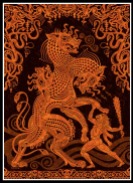







 One of the most moving stories involving dogs in the one concerning Argos, the loyal friend of King
One of the most moving stories involving dogs in the one concerning Argos, the loyal friend of King 








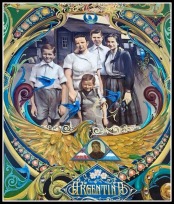

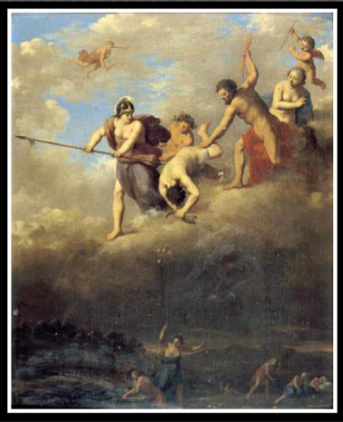
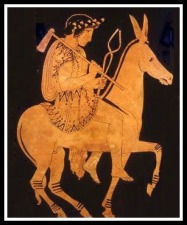

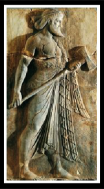
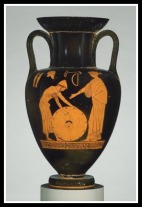





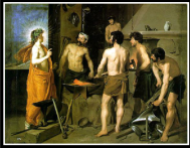




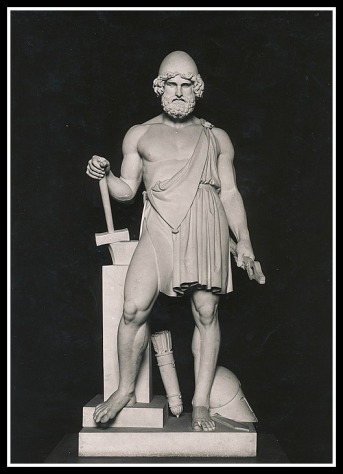








![hans-adam-weissenkircher “Helios [Apollo] on His Chariot” (Detail) by Hans Adam Weissenkircher (17th century).](https://aquileana.files.wordpress.com/2015/06/hans-adam-weissenkircher.jpg?w=162&resize=162%2C162&h=162#038;h=162&crop=1)

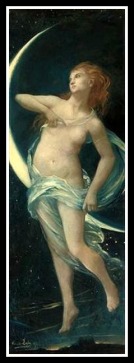





































 Christy is a Canadian freelance writer, poet and author. She is the author of two books. The poetry collection
Christy is a Canadian freelance writer, poet and author. She is the author of two books. The poetry collection
